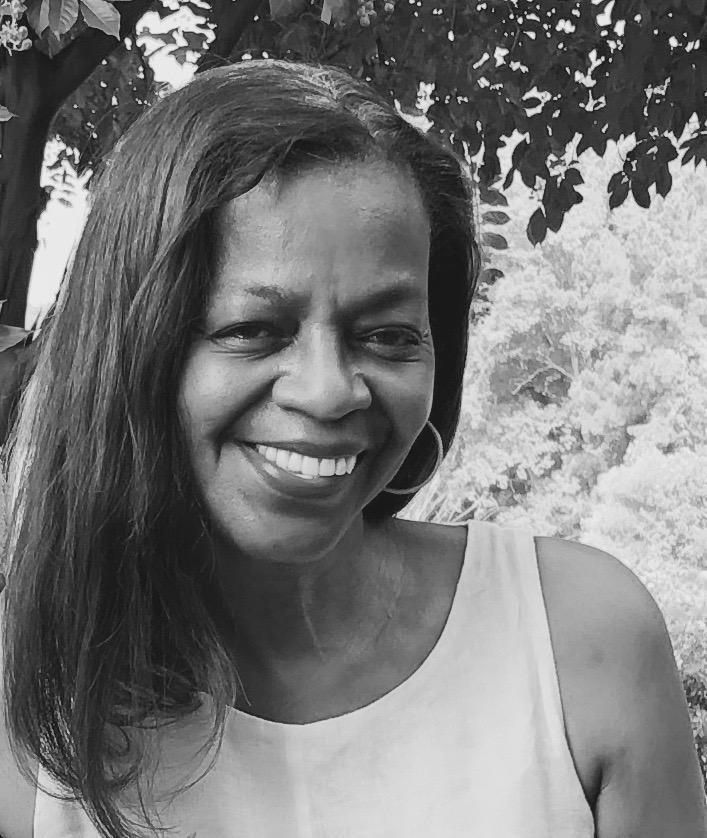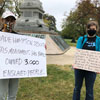
In June 1862, Confederate forces raided a refugee camp on Hutchinson’s Island in South Carolina that housed people who had escaped nearby plantations. Some they “murdered in cold blood,” according to the report of a US naval officer who arrived on the scene afterward. Among the survivors, he found a “man literally riddled with balls and buckshot (since dead); another shot through the lungs and struck over the forehead with a clubbed musket, leaving the bone perfectly bare; one woman shot in the leg, shoulder, and thigh; one far gone in pregnancy, with dislocation of the hip joint and injury to the womb, caused by leaping from a second-story window, and another with displacement of the cap of the knee and injury to the leg from the same cause.” This is what a Civil War battlefield sometimes looked like.
Today, Hutchinson’s Island bears no hint of the battle that took place there in 1862. This is true of many Civil War battlefields, but that has never been a deterrent to marking and studying them. Many years ago, in a paper I presented at the 2012 AHA annual meeting honoring the work of Civil War historian James M. McPherson, and more recently in a forthcoming essay, I wondered aloud about how different the history and remembrances of the Civil War might look if we considered the sites of the slaves’ wars as battlegrounds. They are different in many important respects from places like Vicksburg, Antietam, and Gettysburg. But what insights into war and war casualties or combatants and noncombatants might be gained if historians studied and walked battlefields on plantations or in refugee camps as they do Gettysburg, or if officers who lead the US Army War College’s Strategic Leader Staff Ride took their clients to plantations or the former sites of refugee camps? Army staff rides are designed to provide lessons in leadership and decision-making for military personnel and are marketed to corporations as opportunities to study leadership. What can corporate executives, for example, learn from rides over Antietam Creek about decision-making or risk-taking?
These thoughts were on my mind during a visit many years ago to the Middleton plantation on the Ashley River in the low country of South Carolina. More than two dozen large plantations were built along the Ashley River between 1670 and 1861. As I walked Middleton plantation, now known as Middleton Place and carrying a National Historic Landmark designation, I imagined a staff ride on this ground where enslaved people helped effect their own emancipation. That war—the slaves’ war—is invisible today. A reenactor at the site narrated a different story. After the war, he said, former slaveholders took in Black people who had foolishly believed in something called “freedom” and struggled to take care of them. A brochure featured a small plot of land planted with rice and Sea Island cotton. A photograph in the brochure depicted Black women working the rice crop today. I asked whether the people depicted in the photo were professional models or if they actually worked the crop. They were models, I was told; the crops were grown by volunteers. I still wanted to know if the volunteers are Black women. In the end, Middleton plantation continues to be billed as a site of pleasure and beauty. This accounts for it being a leading tourist attraction in the state of South Carolina, not its history as a battlefield.
What insights might be gained if historians studied battlefields on plantations or in refugee camps as they do Gettysburg?
I think, too, of the Combahee Ferry Raid, remembered today primarily for the rescue of more than 700 enslaved people by Harriet Tubman and US soldiers. It is rarely mentioned that it was also a battlefield—and a mappable one—even though US forces that included Black soldiers burned several plantations, mills, and rice crops, and enslaved people fought Confederate soldiers who tried to prevent their escape. And even though an officer admitted that Confederate forces had allowed “the enemy to come up to them unawares, and then retreated without offering resistance or firing a gun, allowing a parcel of negro wretches, calling themselves soldiers, with a few degraded whites, to march unmolested, with the incendiary torch, to rob, destroy, and burn a large section of the country.”
We are talking here about a battlefield where Confederate cavalry used “negro dogs” to prevent Black people from escaping, where a Confederate officer stated in his report of the affair that a “negro girl” had come within yards of reaching a US boat and making it to freedom but that he ordered her to stop and, when she refused, shot her; she got up and ran back to the others who had also been thwarted in their attempt to board the boat. Despite the bungled Confederate response to the US raid, the vast majority of Black people on the Combahee River plantations remained enslaved. Some 30 people from Charles Lowndes’s Oakland plantation were captured by a company of Confederate soldiers as they tried to make their escape. At Field’s Point, the Confederate commander “discovered a good many negroes standing in the edge of the swamp, commanded by one white man” and “ordered the artillery to fire into them,” which it did “several times.” At the Heyward plantation, Confederate forces fired on the “stolen negroes” fleeing to the US gunboat Blake. In the aftermath of the raid, Confederate pickets in the area were reinforced, a move slaveholder Mary Elliott praised. “I am very glad to hear of the new picket arrangement for guarding the negroes and trust it may arrest desertion on their part—it would be ruinous to have more of such raids as the [Combahee],” she wrote.
We generally do not talk about the site of the Combahee Ferry Raid as a battlefield, the parties that fought there, the casualty rate, the location of the skirmishes, the territory gained and lost, the property destroyed. Combee, Edda L. Fields-Black’s new book, represents an important and rare exception. But what if we mapped this site as a battlefield? Battlefield maps aid commanders in understanding the land armies will march over and fight in—its cultural and topographical features—and aid in planning troop deployment and in the aftermath of battle, assessing victories and defeats. The work of military cartographers is indispensable. The topographic knowledge of enslaved people was also essential to the victory of the US armies. And when we turn to the official maps of the war, we turn in many cases to maps informed by Black people’s knowledge of the cultural and topographical features of the land. Or, in the case of refugee camps, we have after-battle reports that make it possible to map this landscape of war.
These battlegrounds are largely invisible today, literally and figuratively.
I imagine a staff ride along the Combahee, where rice fields made profitable by the labor of enslaved people once stood. I imagine that there will come a time when the battleground on which Black people fought will be seen as hallowed ground not for magnolia and mint julep fantasies but for understanding the part they played in the making of a new birth of freedom, an idea that a review in the Georgia Historical Quarterly in 1939 termed “an absurd bit of propaganda, based on a perversion of historical facts.”
I want to suggest that we need more walking and riding of battlefields, just different ones, that consecrated battlefields include the places and spaces on the home front and the battlefields where enslaved people fought and died. These battlegrounds are largely invisible today, literally and figuratively. They do not appear on Civil War battlefield maps or, for the most part, in Civil War history books. They are not the subjects of staff rides. But they are as mappable as Gettysburg. One can take a tour of a former plantation and even get married on one, but there are no tours of wartime battles that took place on plantations or in refugee camps. Yet they, too, are archives of slavery’s destruction.
Thavolia Glymph is president of the AHA.
Tags: From the President North America African American History Military History

This work is licensed under a Creative Commons Attribution-NonCommercial-NoDerivatives 4.0 International License. Attribution must provide author name, article title, Perspectives on History, date of publication, and a link to this page. This license applies only to the article, not to text or images used here by permission.
The American Historical Association welcomes comments in the discussion area below, at AHA Communities, and in letters to the editor. Please read our commenting and letters policy before submitting.
Comment
Please read our commenting and letters policy before submitting.










